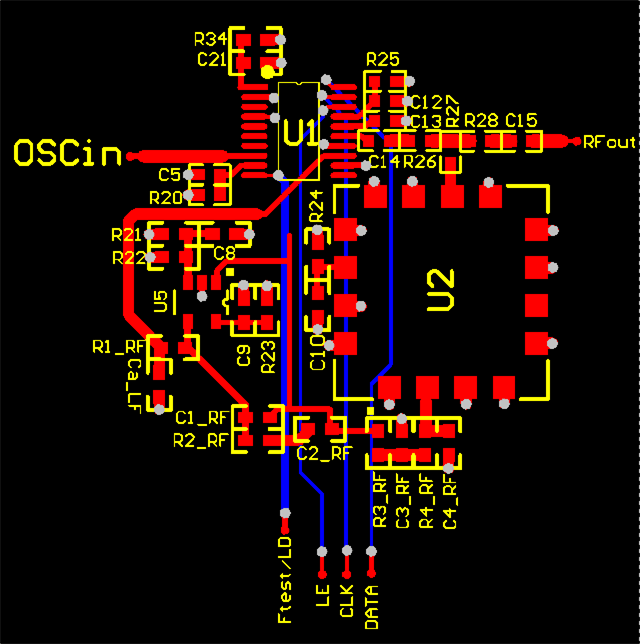SNAS187D February 2003 – January 2016 LMX2430 , LMX2433 , LMX2434
PRODUCTION DATA.
- 1 Features
- 2 Applications
- 3 Description
- 4 Revision History
- 5 Description continued
- 6 Pin Configuration and Functions
- 7 Specifications
- 8 Parameter Measurement Information
-
9 Detailed Description
- 9.1 Overview
- 9.2 Functional Block Diagram
- 9.3 Feature Description
- 9.4 Device Functional Modes
- 9.5 Programming
- 9.6
Register Maps
- 9.6.1 Control Register Content Map
- 9.6.2
R0 Register
- 9.6.2.1 RF_R[14:0] - RF Synthesizer Programmable Reference Divider (R Counter) (R0[17:3])
- 9.6.2.2 RF_CPP - RF Synthesizer Phase Detector Polarity (R0[18])
- 9.6.2.3 RF_CPG - RF Synthesizer Charge-Pump Current Gain (R0[19])
- 9.6.2.4 RF_CPT - RF Synthesizer Charge-Pump Tri-State (R0[20])
- 9.6.2.5 RF_RST - RF Synthesizer Counter Reset (R0[21])
- 9.6.3 R1 Register
- 9.6.4
R2 Register
- 9.6.4.1 RF_TOC[0:11] - RF Synthesizer Time-Out Counter (R2[14:3])
- 9.6.4.2
R3 Register
- 9.6.4.2.1 IF_R[14:0] - IF Synthesizer Programmable Reference Divider (R Counter) (R3[17:3])
- 9.6.4.2.2 IF_CPP - IF Synthesizer Phase Detector Polarity (R3[18])
- 9.6.4.2.3 IF_CPG - IF Synthesizer Charge-Pump Current Gain (R3[19])
- 9.6.4.2.4 IF_CPT - IF Synthesizer Charge-Pump Tri-State (R3[20])
- 9.6.4.2.5 IF_RST - IF Synthesizer Counter Reset (R3[21])
- 9.6.5 R4 Register
- 9.6.6 R5 Register
- 9.6.7 MUX[3:0] - Multifunction Output Select (R3[23:22]:R0[23:22])
- 10Application and Implementation
- 11Power Supply Recommendations
- 12Layout
- 13Device and Documentation Support
- 14Mechanical, Packaging, and Orderable Information
12 Layout
12.1 Layout Guidelines
In general, there are two cases for layout:
- Use as a single PLL: In this case, all power supply pins must be connected, but for those on the unused PLL, bypassing is not necessary, and they can be shorted together. Leave unused outputs unconnected, and do not ground them.
- Use as a dual PLL: In this case, supply coupling is much more critical as there can be crosstalk between the two PLLs. There must be isolation in the form of resistors or inductors between the charge-pump supply pins, and decoupling capacitors are more important.
12.2 Layout Example
 Figure 36. Layout Example
Figure 36. Layout Example